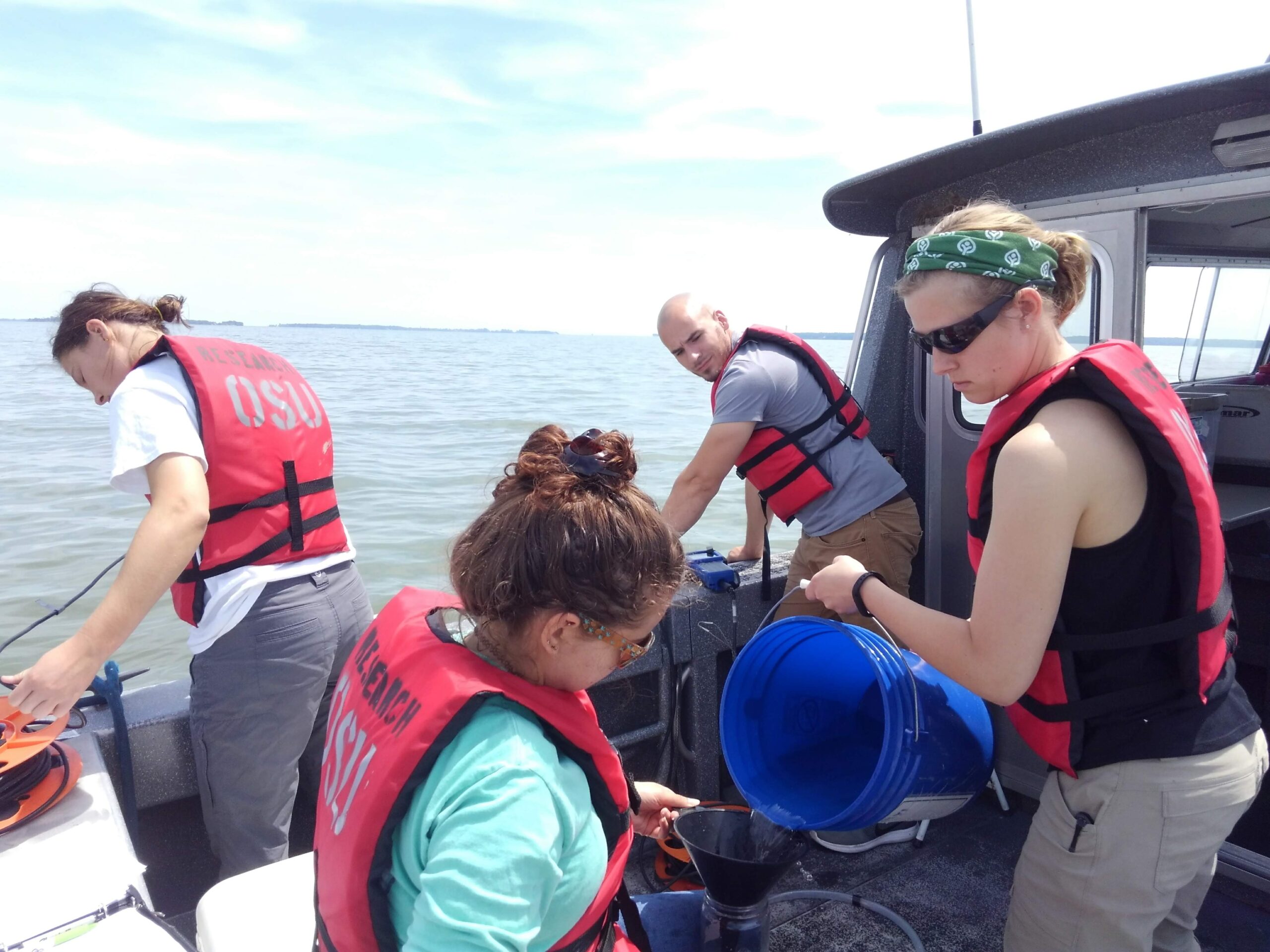
Models predicting the amount of Microcystis, an alga that forms harmful blooms in Lake Erie, assume that simple water transport processes can explain short term changes in bloom biomass. However, predicting bloom toxicity has been more challenging because bloom toxins do not correlate with bloom biomass. Knowing the toxicity of a particular bloom is critical information for drinking water plant operators to ensure its safety. It is also important to beach managers so they can issue warnings to beach goers.
Recent studies have shown that different varieties (or congeners) of microcystins differ in levels of toxicity, and that the varieties of microcystins in the lake (and therefore toxicity) depends on the amount of nitrogen present at the time. In an article published this past June, NCCOS funded researchers from The Ohio State University, Wayne State University, University of Toledo, and University of Michigan showed that less-toxic varieties are present when there is more nitrogen in the water, while more-toxic varieties are present in nitrogen-poor water.
In another study also published in June from the same NCCOS project, the researchers from the Michigan Technological University, The Ohio State University, LimnoTech and the Argonne National Laboratory, determined that it is necessary to know the dynamics of toxin production to forecast bloom toxicity. In their study, the scientists considered simple water transport processes with and without toxin production rates. The “hindcast” models with toxin production rates were more accurate than those without production rates and were able to reproduce the very high concentrations often detected in Maumee Bay and around the Toledo drinking water intake.
Yet despite the improvement of the model, forecasting will prove to be difficult. The researchers suspect that knowing the proper initial conditions, that is which congeners are present and the rate they are produced, are key to predict toxicity in real situations. However, knowing the initial conditions requires many water samples to be collected weekly and quickly analyzed for the common varieties of microcystins, which does not currently happen due to laboratory limitations. Despite the real-life results, the study represents a significant step forward in our ability to predict bloom toxicity, as current monitoring protocols in Lake Erie are not adequate to accurately predict toxicity.
Citations:
– Ohio State University News: Current estimates of Lake Erie algae toxicity may miss the mark
– Justin D. Chaffin, Judy A. Westrick, Laura A. Reitz, Thomas B. Bridgeman. 2023. Microcystin congeners in Lake Erie follow the seasonal pattern of nitrogen availability. Harmful Algae. https://doi.org/10.1016/j.hal.2023.102466
– Xing Zhou, Justin D. Chaffin, John F. Bratton, Edward M. Verhamme, Pengfei Xue. 2023. Forecasting microcystin concentrations in Lake Erie using an Eulerian tracer model. Journal of Great Lakes Research. https://doi.org/10.1016/j.jglr.2023.06.006
